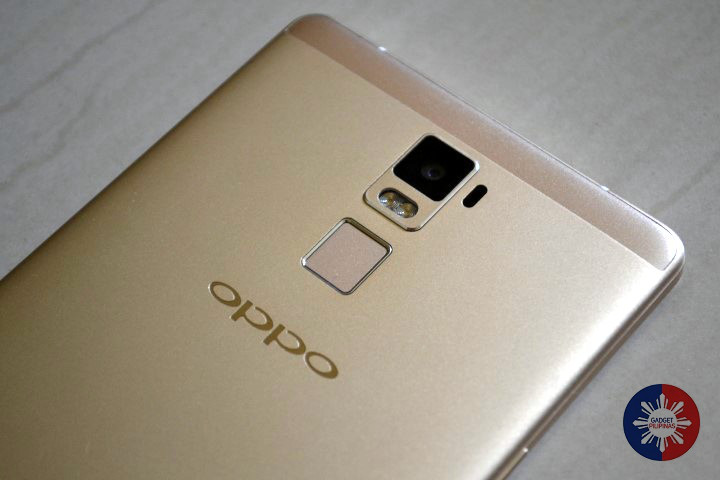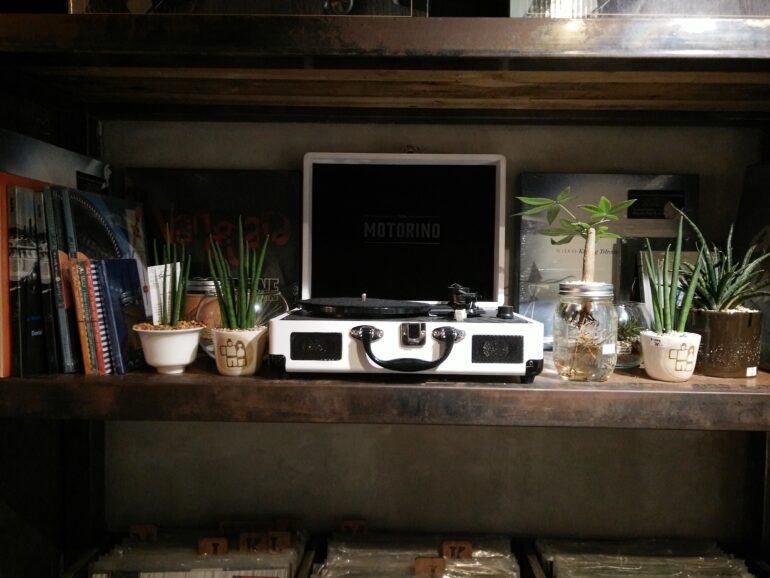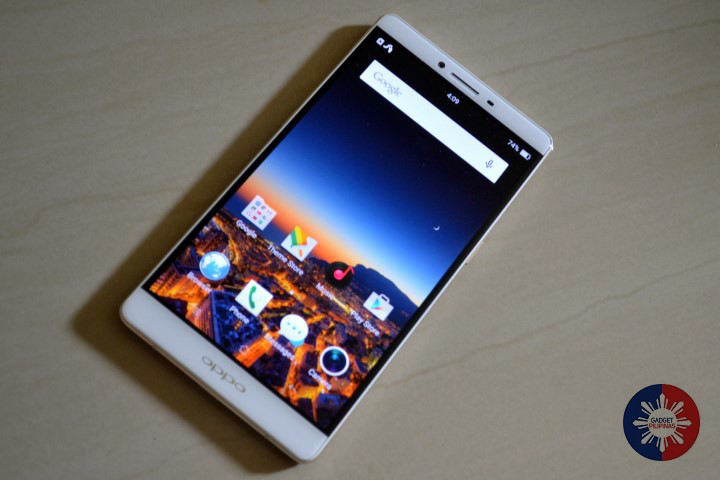
An overwhelming majority of smartphone users have made it perfectly clear over the past few years that size matters in smartphones — and to more people than you might think, at that. This is why we’ve got a lot of phablets on the market. Recently, OPPO entered the fray with the launch of the OPPO R7 Plus here in the Philippines. We’ve spent some time and gathered our thoughts on it, and have posted them here in this review.
Hardware and design
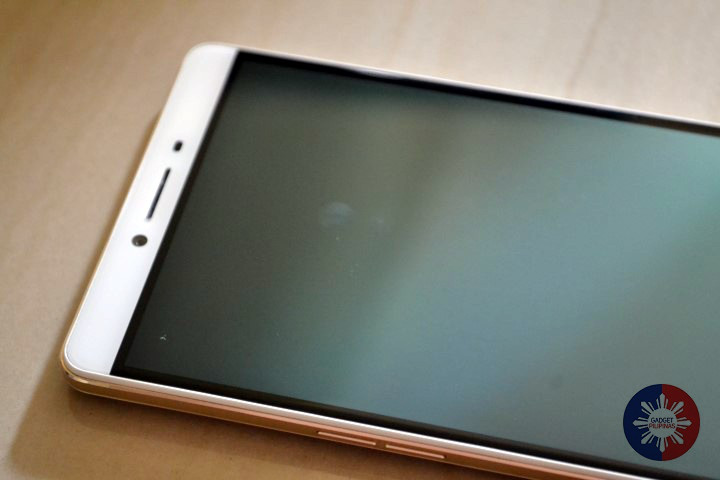
Oppo’s R7 Plus is one of only a few branded phones in the country that use a unibody design. Its casing is made out of lightweight magnesium-aluminum alloy, which is excellent because it kind of acts as a counter to the phone’s large size.
Even though it is basically gargantuan when compared with the average Android smartphone of today, the slim and light frame makes it easy to hold for certain one-handed tasks.
It should be noted here, though, that using the Oppo R7 Plus exclusively with one hand is almost impossible simply because of how big it is. With that said, it has a special software tweak for one-handed use, which shrinks the screen to one side so you can easily reach everything. It’s a good workaround for the fact that the R7 Plus has a little too much screen size.

The R7 Plus design is simple and understated, but it doesn’t look boring. It has a few hardware buttons divided between its right and left sides, and pretty much all of the usual hardware components you might expect out of an Android phone nowadays.
There are no capacitive touch menu buttons here, only on-screen keys that automatically adapt to whatever is shown on the screen.
Display and camera
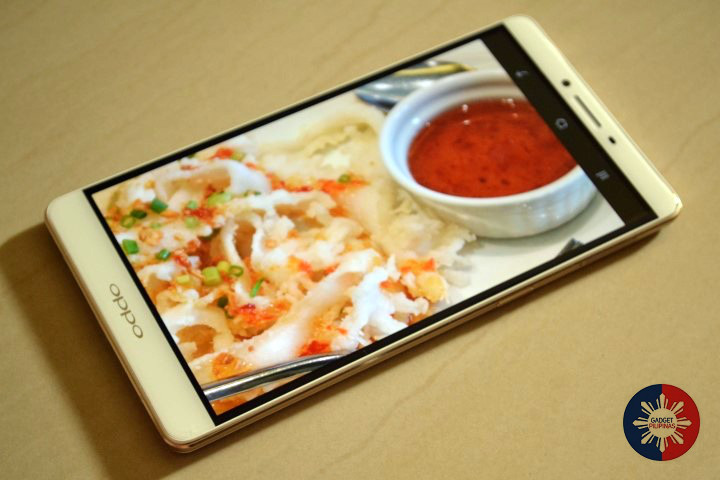
The Oppo R7 Plus is classed as a phablet because it uses a 6-inch Full HD screen. That means it has a native screen resolution of 1920×1080 pixels. Not as sharp as we would have wanted, but still much better than what you’d get with phones that have smaller screens.
The R7 Plus display is bright, responsive, and from what we’ve seen, color-accurate. It didn’t present us with any problems when we had to navigate the menus, look at photos, read text, or use any of the installed Android apps. We definitely enjoyed using it to play our favorite Android games and watch our favorite movies and TV shows.
But while we enjoyed our experience with the R7 Plus screen overall, we noticed something mildly annoying when we first turned the phone on. From afar, with the screen turned off, it looks like the R7 Plus has very little to no bezels surrounding the screen. However, when we turned on the phone, the illusion was revealed.
The bezel on the sides of the display actually turned out a lot thicker that we expected. This isn’t something that affects the performance or screen quality by any means, but it’s something that we couldn’t “unsee” after we had already seen it.
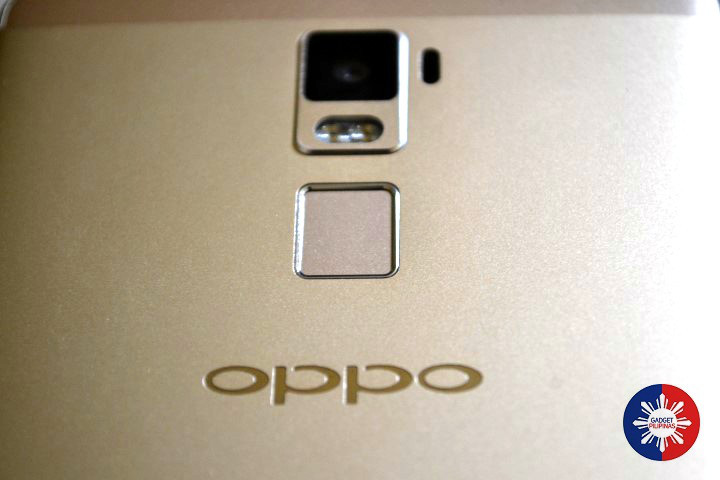
The built-in rear camera on the R7 Plus is located near the top of the back cover, right above a built-in fingerprint sensor. There’s also a built-in dual-LED flash module and an autofocus laser for better focusing on subjects, especially for closeups.
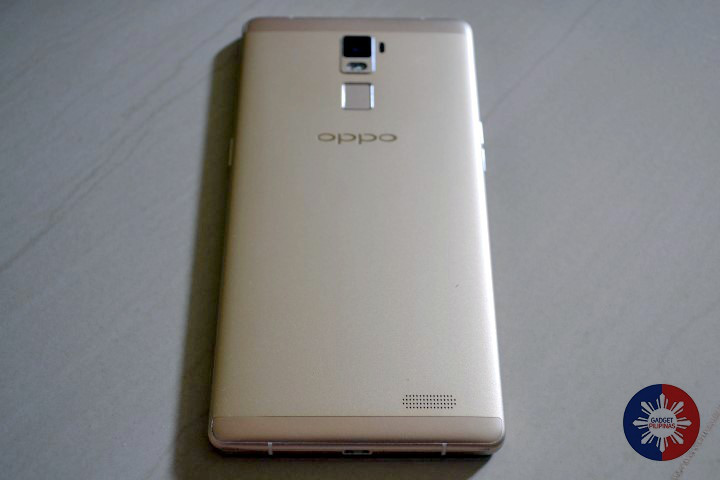
The rear camera on the Oppo R7 Plus has to be one of the fastest smartphone cameras that we have ever tested. Photos are captured pretty much instantaneously, and you have plenty of options for customization either while the photo is being taken or after.
Because of the camera options and speed in taking photos, we can say for sure that the R7 Plus is one of the better digicam replacements if your choices have to involve the Android OS in some way. Check out the following camera sample photos.
Gallery
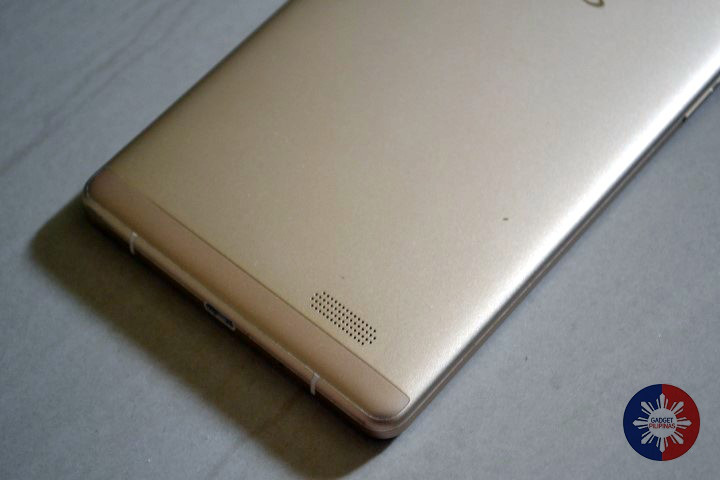
And if you’re wondering about the Oppo R7 Plus’s audio performance, our quick tests have shown us that the sound quality is as good as the phone looks. In fact, it’s a bit misleading that the speaker port is as small as it is, and placed at a somewhat awkward location near the bottom of the phone. Because it’s definitely able to pump out loud sounds whether you want to watch videos or listen to music.
Software and OS
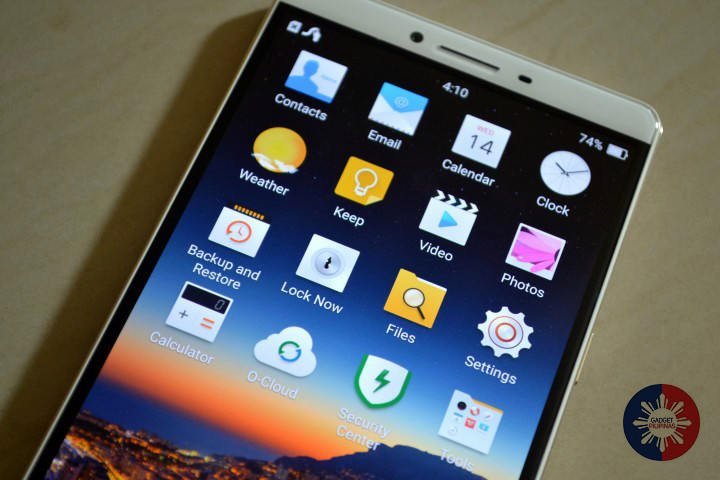
The R7 Plus runs Android Lollipop right out of the box, and it is overlayed with Oppo’s custom software skin, called Color OS. It barely looks like Android, but works beautifully on the R7 Plus’s screen.
Color OS takes a bit of time to get used to, but once you get the hang of it, you’ll start to see that it’s better than stock Android in some regards. Its on-screen menu buttons adapt to what’s being shown on the screen, and they take about half as much space as their stock Android counterparts. Also, the lack of an app drawer means you have to organize your apps if you install too many of them. Otherwise, they will just cause more home screens to appear, and that’s a pain in the bum.
The Settings screen on the R7 Plus is also different in that it is organized into segments where you’ll find certain options under certain tabs. The general settings is separate from the display and sound settings, for instance, and that is a big help for easy navigation.
Again, it should be noted here that it may take a while for you to become familiar with the location of all the options on the screen. But once you memorize it, it’s just like using any other Android smartphone.
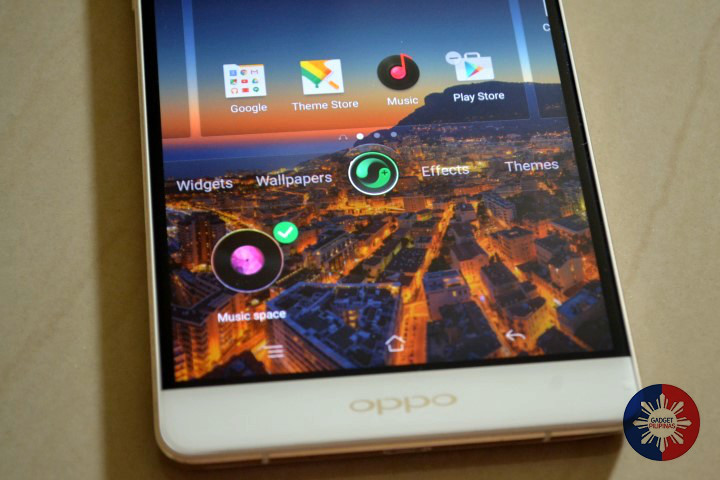
The R7 Plus also offers options for customizing the look of the home screen by changing the wallpaper or adding widgets and app icons. This can be accessed by a long press on one of the virtual menu buttons, and you’re free to do the customization whenever you want.
General performance and battery
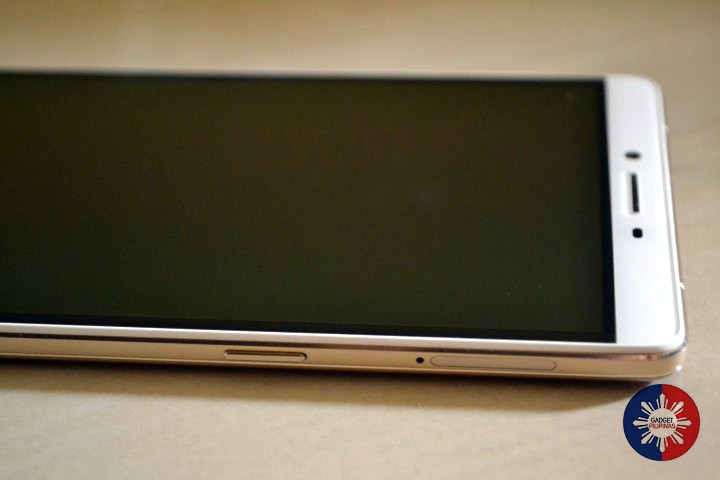
As we’ve already mentioned above, the Oppo R7 Plus is big all around. It has a big screen — which is protected with a layer of Gorilla Glass 3, by the way — and it has a powerful camera and speaker setup, to boot. Yet despite all of this it remains lightweight and somewhat handy. It also runs on a speedy Snapdragon 615 SoC, which gives it enough computing chops to handle most processing and graphics related tasks with ease.
The R7 Plus is really not all about the screen. Its innards will give many high-end smartphone models a run for their money, since it also has 3 gigs of RAM, 32 gigs of storage, and microSD card expansion up to 128GB. In use, all of this translates to the R7 Plus being the kind of phone that you just set and forget. After you first go through the initial setup screen, we were able to use it for pretty much everything we needed without ever having to worry about running low on memory, storage space, or even battery life.
That’s one thing that the R7 Plus is really great at, outlasting all of the other gadgets in our backpack. Its built-in 4100mAh battery was able to consistently last more than 10 hours in our continuous video playback test. That’s more than double the battery life of some other high-end Android phones that we’ve tested in the past.
Fast charging support on the R7 Plus with its VOOC charger also makes it possible to get a full charge from 0% in less than 1 hour. This is absolutely mind-boggling, as there are smartphones today that take as long as up to 3 or 4 hours for a full charge. Battery life on the R7 Plus is just unbelievable.
Conclusion
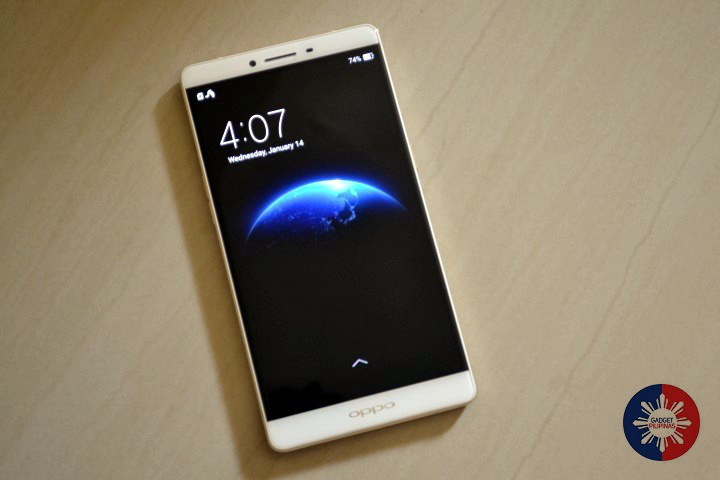
The Oppo R7 Plus is quite simply one of the most gorgeous Android phones that we’ve ever laid our eyes on, and the fact that it’s actually a high-level mid-range phone with pretty powerful specs is a little bit like sweet icing on this golden cake. If you’re not sold on the screen or the incredibly long battery life — which supports quick charging — then it’ll be hard to convince you that this is a top pick. It would be understandable to shun it for its size, but otherwise, the R7 Plus has got must-have written all over it.

